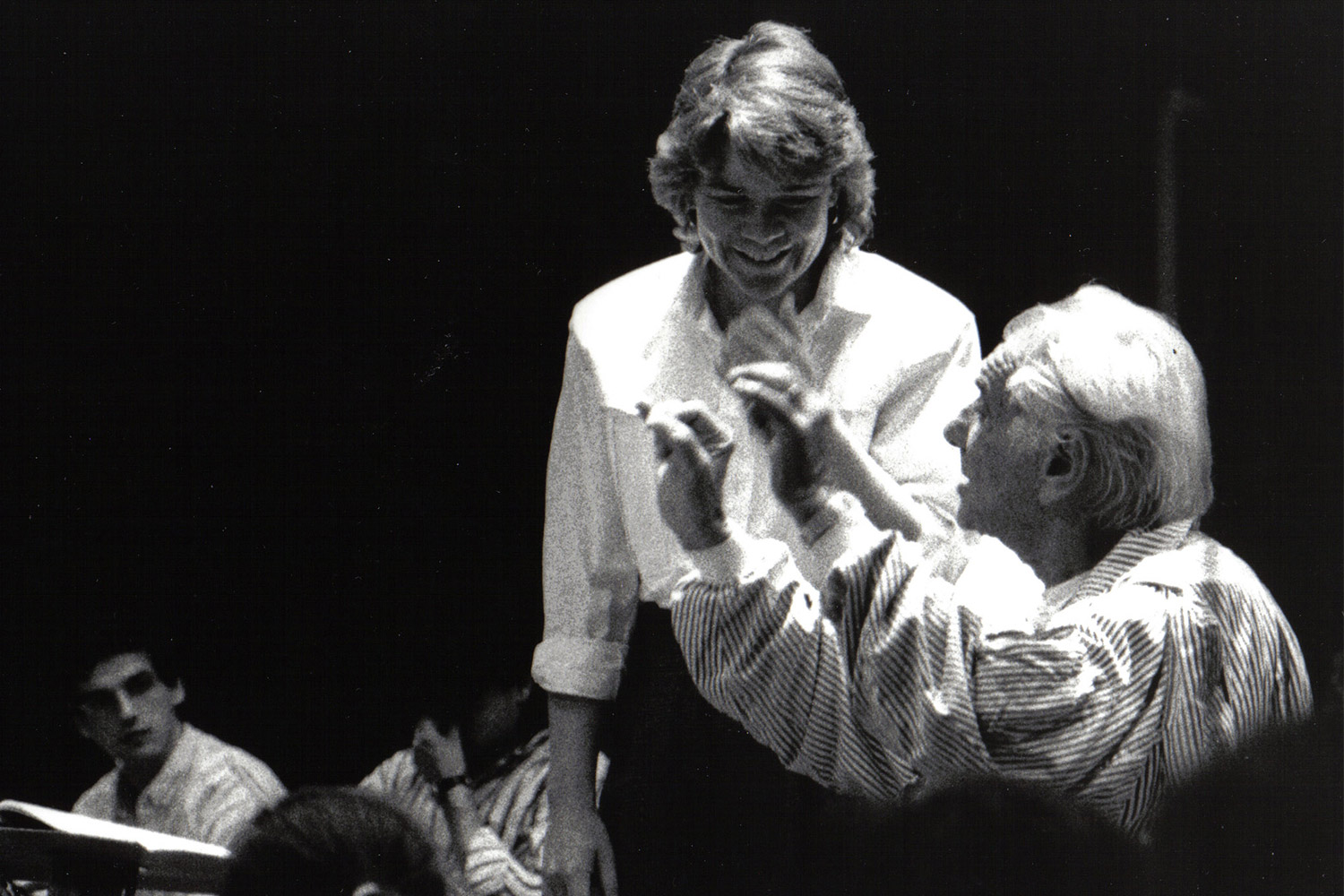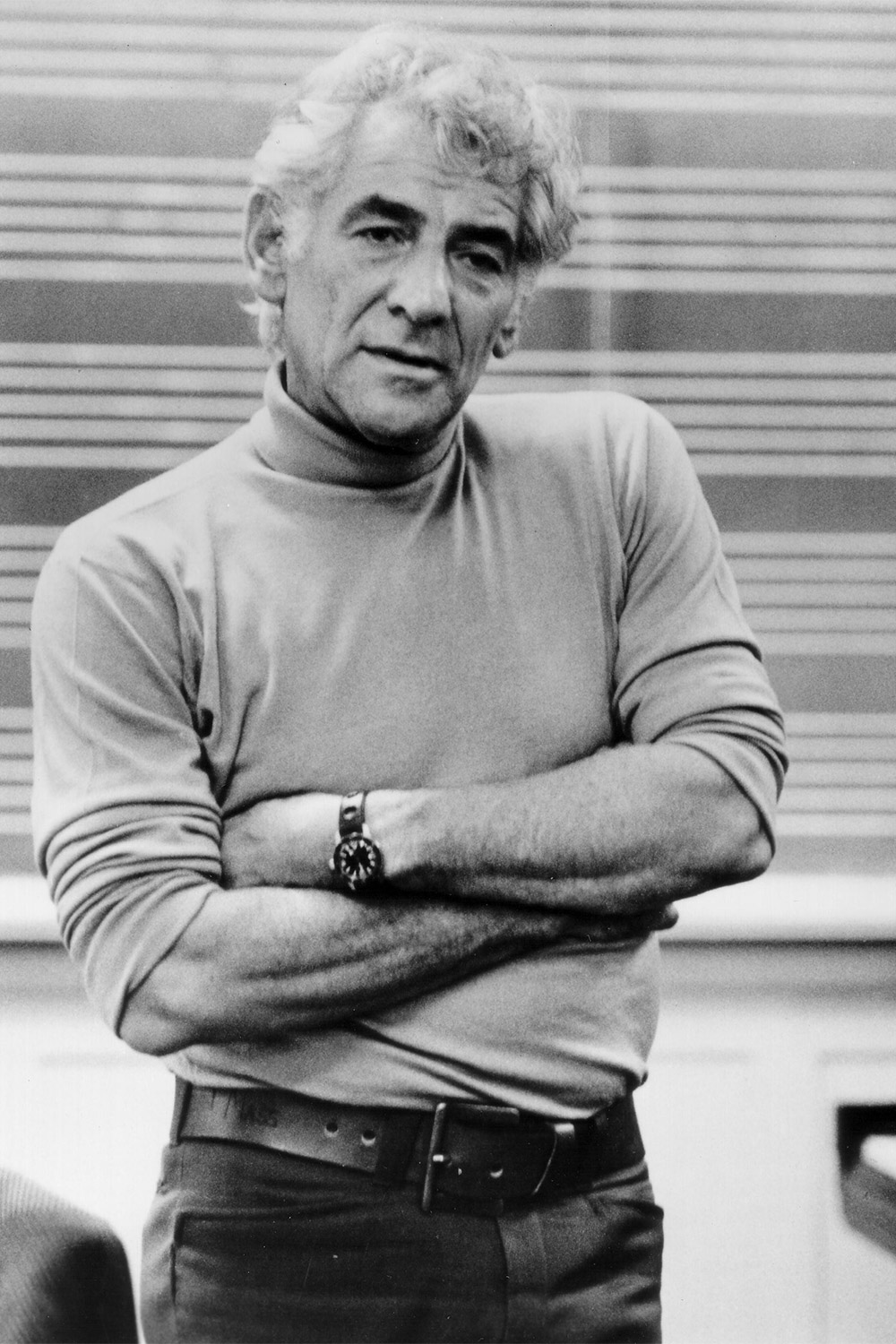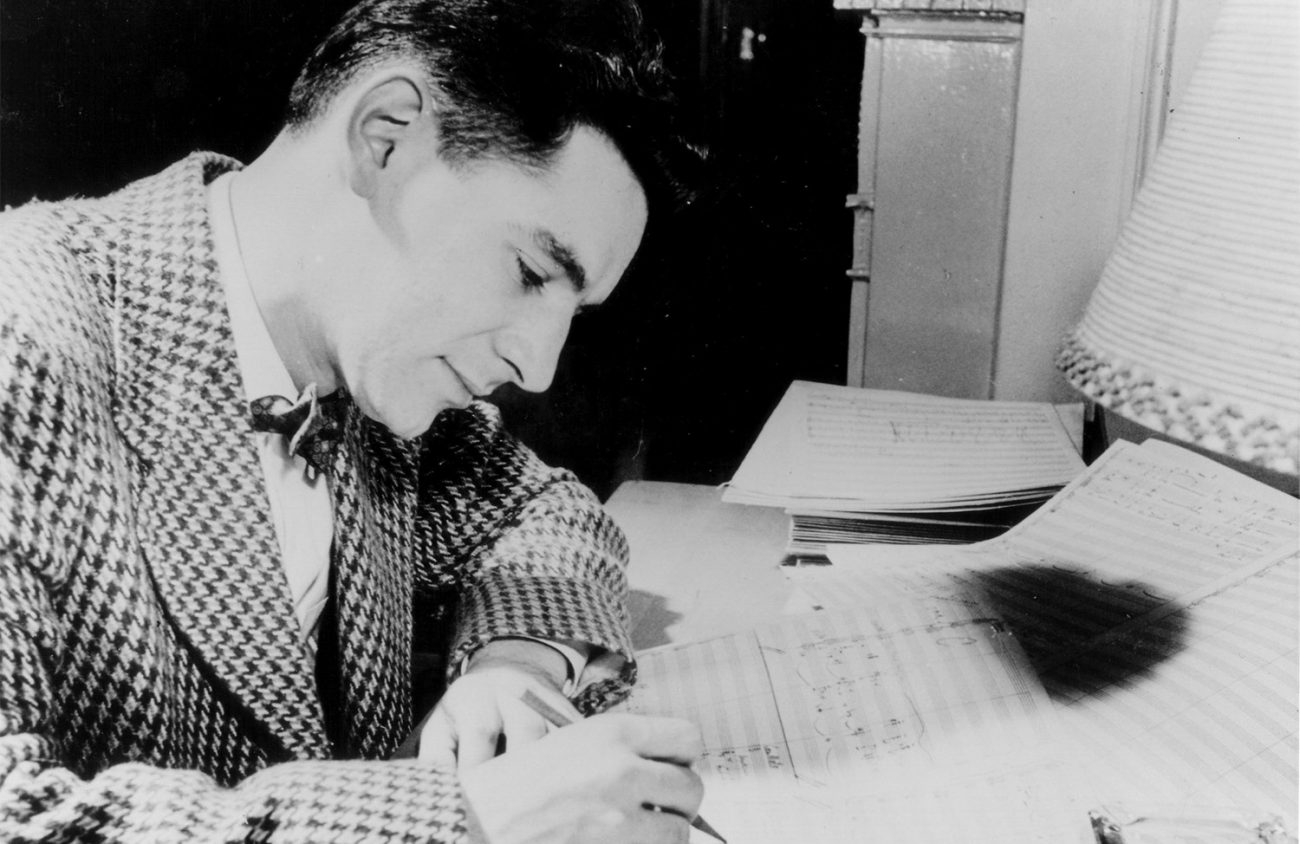Marin Alsop had just started her job as music director and conductor at Eugene Symphony when Leonard Bernstein invited her to celebrate her birthday with him in New York.
It was Oct. 14, 1990. She was inside the Eugene airport, ready to go visit her mentor, and she still remembers the date. Because that’s when she heard that Bernstein had died.
He was 72.
Aug. 25, 2018, marked 100 years of Bernstein, whose work and contribution to the American classical world lives on. Bernstein never set foot in Oregon, but his legacy of engaging with audiences, inspiring youth and his compositions continue in Eugene’s orchestras.
The people’s musician
Throughout his life, Bernstein worked toward “demystifying” classical music, Alsop tells Eugene Weekly on the road from Chicago.
Alsop, now the music director of Baltimore Symphony Orchestra, has been talking with media outlets to both support Bernstein’s 100th birthday and market a box set of Bernstein, titled Bernstein: Marin Alsop’s Complete Naxos Recordings. Alsop, a student of Bernstein’s, has become one of his biggest advocates.
Bernstein was born in 1918 to Russian-Jewish immigrants. He caught the music bug at 10 and became an overnight sensation when, at 25, he substituted for an ill Bruno Walter, conducting the New York Philharmonic at the last minute. He held the music director position until 1969.
He was the first conductor to break down walls by bringing orchestral works to the general public through television with his Young People’s Concerts with the New York Philharmonic. The series was broadcast on CBS from 1958 to 1972. Bernstein used the show to introduce the works of Gustav Mahler, Aaron Copland, Igor Stravinsky and many other composers to young audiences — but its target demographic could be anyone interested in music.
“He had the ability to make it sound so natural and necessary for the average Joe,” says Kelly Kuo, artistic director for Oregon Mozart Players. “By taking out the elitism, he made it like you were having a conversation with the butcher at your deli. As you’re getting a pound of ground beef, you’re talking about Copland.”
The series’ episodes had titles such as “What is Classical Music,” “What Is a Mode” or “What Is a Melody.” These are the kind of questions that can easily result in a dense, academic answer. However, with a young audience present, Bernstein gave answers that were educational and easily accessible.
Besides conducting and educating, Bernstein’s work ethic resulted in a prolific catalogue of compositions. Yet it’s the music of West Side Story, which gracefully meshes the worlds of jazz and classical, that many know Bernstein for.
Alsop can’t say what her favorite Bernstein piece is, but she will say that she loves “Somewhere” from the Broadway musical.
His other works included film scores, choral works, chamber music, symphonies and more.
Bernstein also took on politics and human rights. He held a fundraiser for the Black Panthers to raise money for the members of “Panther 21” who were in jail.
To no surprise, Bernstein was a target for the FBI and J. Edgar Hoover. In fact, Bernstein was even dragged into a House Un-American Activities Committee interrogation.
The FBI has since declassified several hundred pages of reports on Bernstein and his political activity as they attempted to pinpoint some sort of “communist” activity and ruin his career.
His passion for global politics took him to Berlin when the wall fell in 1989, where he conducted a performance of Beethoven’s Ninth Symphony, changing “Ode to Joy” into “Ode to Freedom.”
Alsop says Bernstein burned the candle at both ends, yet those around him thought he’d live forever.
Enlarge

Photo Courtesy Marin Alsop
Eugene’s connection to Bernstein
When Alsop was growing up in New York City, she had a poster of The Beatles’ iconic Abbey Road walk and one of Leonard Bernstein. The poster of Bernstein was larger than the Beatles. It wasn’t done on purpose, but it was foretelling of the role he would play in her life.
“He was my hero,” she tells EW. “He knew he was my idol. I told him enough times.”
Alsop avoids the word “crush” when talking about Bernstein, but she says he knew he was an idol for many.
She remembers seeing one of his Young People’s Concerts at 9. She doesn’t remember the music from the event, but what still sticks in her memory is how he would jump around when he conducted.
“It made me want to be a conductor that day because no one yelled at him for jumping around,” Alsop says.
That nine-year-old girl would later become music director and conductor of Eugene Symphony from 1989 to 1996.
Today, Alsop has earned some of the highest accolades in classical music — certainly the most for any former director of Eugene Symphony.
Alsop is currently the music director of Baltimore Symphony Orchestra and principal conductor and music director of the São Paulo Symphony Orchestra. She’s considered one of Bernstein’s best-known pupils and is a central figure in his 100th birthday celebration.
Bernstein, she says, had a sort of grace and comfort while sharing his thoughts about music.
“I loved the communication,” she says about his Young People’s Concerts. “I felt that he was talking to me.”
At Eugene Symphony, which was her first job as a music director after studying with Bernstein, Alsop says she started experimenting talking with audiences, and it seemed to have a positive impact.
When Alsop first studied with Bernstein, after earning the Leonard Bernstein Conducting Fellowship to the Tanglewood Music Center, she says it was terrifying and wonderful to work with him.
“I was afraid that he wouldn’t live up to my expectations,” she says. “He not only met all of my expectations. He exceeded them. He was one of those rare people that gave so much more in person than you could ever imagine.”
Alsop, then 31, worked with Bernstein in what she remembers as an exciting summer of 1988.
“I was old enough to understand it. I didn’t miss any of it,” she says. “I can remember almost every conversation with him, verbatim.”
The day after she conducted a concert with Bernstein, he celebrated his 70th birthday. Alsop attended the birthday celebration, which was a gathering of some of America’s greatest composers, lyricists and musicians.
It was a festive celebration, Alsop recalls. Among other dedications to him, West Side Story’s lyricist, Stephen Sondheim, reworked lyrics in Bernstein’s honor, which Lauren Bacall then sang. And John Williams — the giant of movie music — wrote a sort of fanfare for Bernstein.
In June, Williams was a guest conductor for Baltimore Symphony Orchestra. Aware of how much Bernstein meant to Alsop, Williams invited her to take the podium and conduct “To Lenny! To Lenny!,” the piece he wrote for Bernstein’s 70th birthday.
A year after working with Bernstein in 1988, Alsop would go on to serve as Eugene Symphony’s music director and conductor until 1996.
At Eugene Symphony, she was a champion for Bernstein, Kuo says.
Kuo remembers attending Eugene Symphony’s performance of Bernstein’s Mass, which would be Alsop’s final time at the podium as music director. Commissioned by Jacqueline Kennedy Onassis, the composition is an ambitious project that presents the diversity of American music: rock ‘n’ roll, Broadway and opera.
Then a student at the University of Oregon, Kuo recalls how the performance threw in basically everything — even the kitchen sink. The piece is known for being an interdisciplinary collaboration, and it took a lot of courage for Alsop to bring it to the stage in Eugene, Kuo says.
Hooked on Classical
Anniversaries can be problematic for Francesco Lecce-Chong, the newest music director and conductor of Eugene Symphony. Sometimes anniversaries are an excuse to dedicate performances to a composer whose work is already played a lot.
Or work that maybe wasn’t meant to pass the test of time.
Bernstein’s work is neither.
“Leonard Bernstein is more than just a composer,” Lecce-Chong says. “He’s done more for the music world than any other figure in history, especially with how we listen to music in the U.S.”
Although Bernstein could hold his own in an academic setting, he was dedicated to breaking down the pretense often surrounding classical music with his family-oriented concerts.
Family concerts are a mainstay for many orchestras, especially for Eugene Symphony. However, many music directors don’t prioritize these concerts, often delegating them to assistant directors.
Family concerts are important for Lecce-Chong. They’re a way for Eugene Symphony to have a direct, close relationship with the community.
Lecce-Chong also serves as the music director of the Santa Rosa Symphony in Santa Rosa, California. Despite the distance, he says the family concerts are an important aspect of the job.
Despite Bernstein’s emphasis on education, the classical music world is a far cry from where it was when Bernstein was alive, says Kuo.
It’s important to include more youth in music and Bernstein was aware of this, especially since classical music — just like today — had a predominately older audience. Bernstein was a champion for engaging youth with classical music, and it’s something Kuo says has worked with the Mozart Players.
During his tenure as music director, he’s implemented programs, like the Young Soloist Competition, to get young people hooked on classical music.
This is also the first year that the Oregon Mozart Players have committed to conducting community outreach through Eugene-Springfield Youth Orchestras Mentorship and Collaboration.
The point of the program is to bring a wider community into Oregon Mozart Players’ concerts. By doing so, Kuo hopes it’ll ingrain classical music into young musicians, and especially inspire some to become the next generation’s leaders in the field.
“It’ll do what Young People’s Concerts did for me,” he says.
Enlarge

Photos courtesy of the Leonard Berstein office
Celebrating Bernstein in Eugene
The Bernstein centennial is an opportunity to dig out some of the maestro’s work that hasn’t been performed by Eugene Symphony, Lecce-Chong says.
He thought about cramming the Bernstein celebration into one program, but he didn’t want people to hear just Bernstein.
Lecce-Chong is proud of the symphony’s three-month Bernstein celebration. It has more than just music by Bernstein. It shows his connection to his Jewish heritage with Ernest Bloch’s Schelomo. It shows his dedication to human rights by performing Dmitri Shostakovich’s Symphony No. 5 in D Minor, a composer who suffered as an artist under the Joseph Stalin. And it’s a display of Bernstein’s ingenuity with his Symphony No. 2 (also known as Age of Anxiety).
Best of all, the season pairs the Fancy Free ballet composition with Mozart’s Six German Dances. That will be the first time Eugene Symphony has performed the Bernstein composition.
When Lecce-Chong talks about Mozart’s piece, he lights up with enthusiasm — although, to be fair, he seems to always be that way. It helps that playing harpsichord is one of Lecce-Chong’s favorite things to do, but it’s the combination of the compositions that excites him.
He calls the Mozart dances goofy, yet rustic. And they were banned during Mozart’s time.
“You can see people at that time doing scandalous dances during this music,” he says. “Like they’re probably touching when they shouldn’t be touching.”
Bernstein, like Mozart, captures a similar image in Fancy Free. At 25, Bernstein composed the music for Jerome Robbins, who’d later choreographed West Side Story. Years later, Fancy Free would become On The Town.
The score captures the sort of music you would’ve heard if you were a sailor out on liberty in World War II-era New York City, Lecce-Chong says.
Oregon Mozart Players have one program of Bernstein, titled “Made In America” that features his Arias and Barcarolles.
Bernstein dedicated Arias and Barcarolles to President Dwight D. Eisenhower based on feedback from the president after a White House performance.
“I liked that last piece you played. It’s got a theme. I like music with a theme, not all them arias and barcarolles,” Eisenhower told Bernstein.
The program also includes Copland’s Lincoln Portrait, with whom Bernstein had a close relationship, and Finding Rothko by Adam Schoenberg, which channels Bernstein’s passion for interdisciplinary arts.
During the Schoenberg performance, Ella Hansen, a student of John Park, a professor at University of Oregon, will project her art inspired by Rothko.
A 21st-Century Man
Conductors today haven’t exactly caught on to jumping on stage as wildly as Bernstein did. Even Alsop says that, although his podium antics drew her to conducting, she doesn’t conduct like Bernstein.
However, Bernstein set a precedent for how a conductor works with an orchestra and its audience. Kuo says the modern-day conductor has to follow some of Bernstein’s practices. You have to engage with younger audiences, as well as provide pre-concert lectures about a performance.
Bernstein wasn’t just a conductor-composer to Alsop, though. He was a great storyteller who could switch from reciting great classical literature to making up a limerick on the spot. He was a humanitarian. He wasn’t afraid to speak out about injustices.
Although Bernstein’s impact has been made within the orchestral world, Alsop may be right that the world needs someone who is unafraid to stand up for human rights and world issues as proudly as he did. Bernstein might be a figure the U.S. could gain some wisdom from, as orchestras in Eugene — and nationwide — undergo their celebration of him.
For Bernstein’s 70th birthday, he wrote a poem for The New York Times. Bernstein criticized American voters for electing politicians (President George H.W. Bush) who would rather gut social and culture budgets for military gain.
All you have to do is swap Cold War with “War on Terrorism” and his criticism could be viewed as current commentary.
